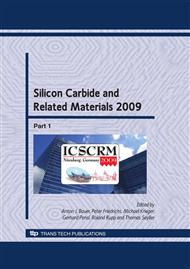p.507
p.511
p.515
p.519
p.523
p.527
p.531
p.535
p.539
A C-V Method of Slow-Switching Interface Traps Identification in Silicon Carbide MOS Structures
Abstract:
A novel method based on the analysis of the C-V hysteresis change with increasing charge release time is proposed. The presence of a band of deep traps was demonstrated using this method in 3C-SiC samples. The same band of deep traps was also observed using photo-electric measurements of barrier height EBS in the same samples.
Info:
Periodical:
Pages:
523-526
Citation:
Online since:
April 2010
Authors:
Keywords:
Price:
Сopyright:
© 2010 Trans Tech Publications Ltd. All Rights Reserved
Share:
Citation:


